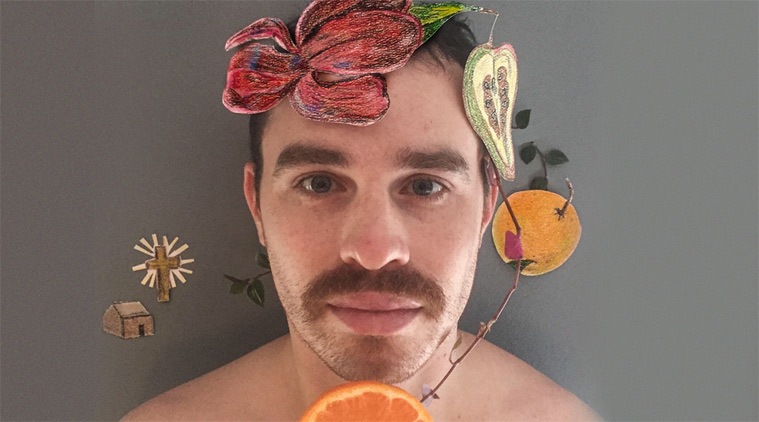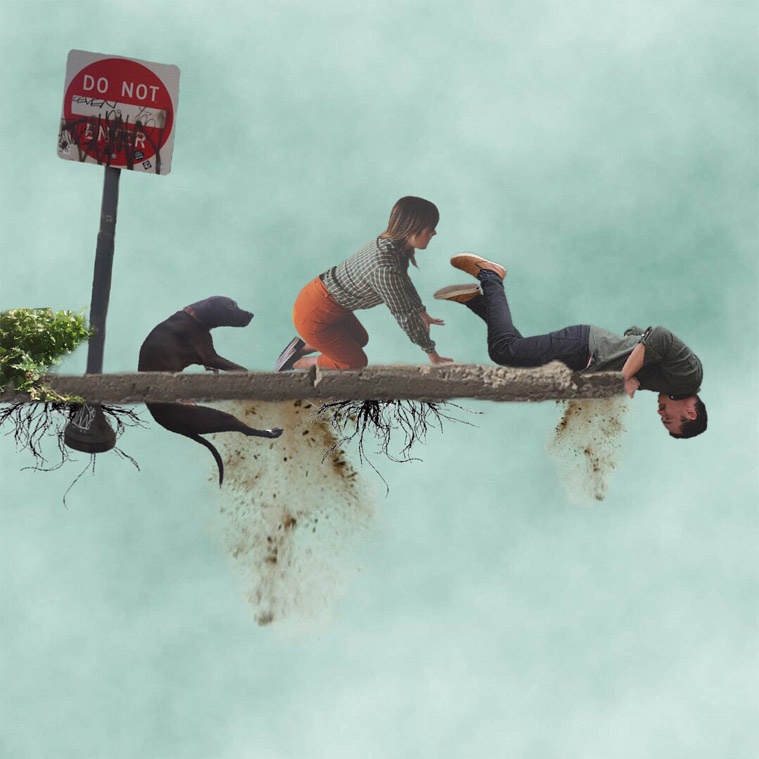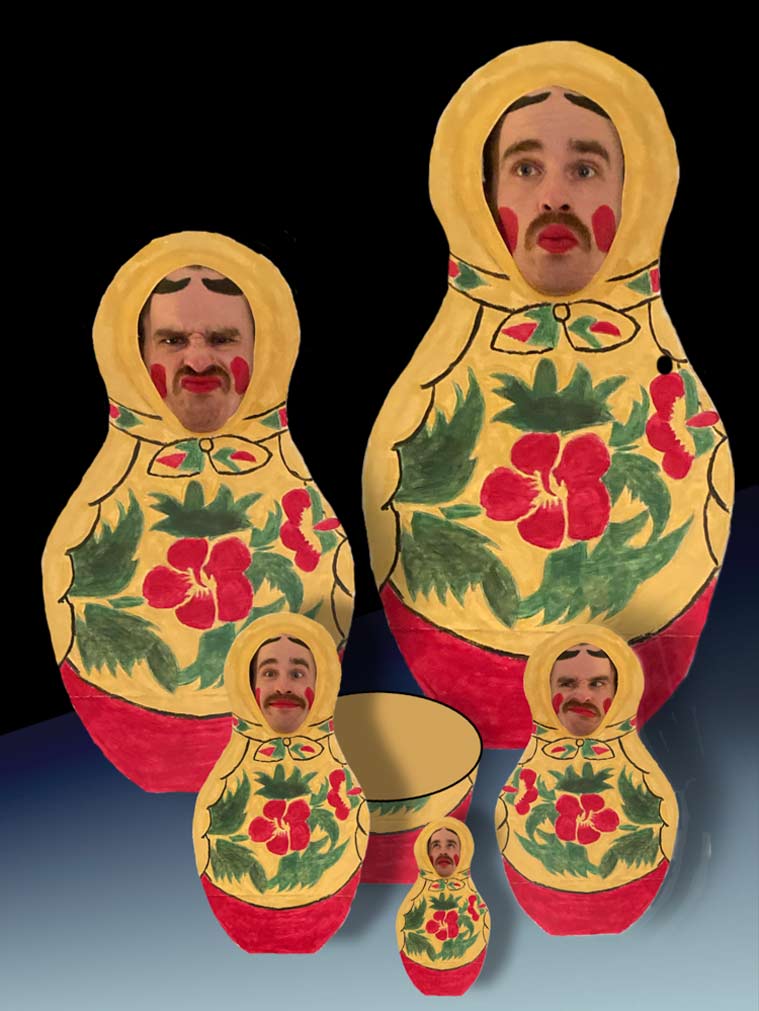 Recreated cover of Oranges Are Not the Only Fruit by Jeanette Winterson. (Photo: Thom Stead/Instagram)
Recreated cover of Oranges Are Not the Only Fruit by Jeanette Winterson. (Photo: Thom Stead/Instagram)
In Yann Martel’s 2001 novel, Pi, a Pondicherry boy, survives 227 days after a shipwreck, while being stranded on a lifeboat in the Pacific Ocean with a Bengal tiger, while Thom Stead has been at home, in quarantine, for over 60 days, due to the outbreak of COVID-19. He picked up Life of Pi, a book he had read 17 years go, and added a new title in his collection of recreated book covers. He used Google’s new 3-D animal feature to fit a tiger in his dining room and built his own lifeboat. That’s a mini project that the Philadelphia-based transportation planner been running from home, where uses different online tools and props available at home to recreate book covers, and posts them on Instagram under the handle @readbooks.servebooks, since early April. His day job, which involves redesigning streets to make them more efficient for bicycles, pedestrians and transit, has been greatly impacted by the pandemic, as no one is really sure how public transit is going to work. That’s where the world of literature, aided by social media, comes to his rescue, where he forgets “everything awful” for a few hours.
What prompted you to start this initiative of recreating book covers?
It all started at the beginning of quarantine when I posted a couple of pictures of myself wearing funny outfits and reading books. I ran out of funny outfits, so I started dressing up like the people on the covers on the books. I received a great response from friends and decided to start an account. It all took off pretty quickly.
Is it helping you cope up with the quarantine and the lockdown?
It’s given me a sense of purpose and an outlet for my anxiety. I’m the kind of person that tends to get hyper focused and lost in my projects, so having something to do every day has really helped me to pass the time and provide a bit of an escape from reality. I’ve gotten so many nice messages from strangers telling me that my pictures are one of the things they look forward to each day. Knowing that I help people feel a little better, at least for a moment, is a huge motivator. It makes me push myself to innovate and try to make my best work.
 Recreated cover of Where the Sidewalk Ends by Shel Silverstein (Photo: Thom Stead/Instagram)
Recreated cover of Where the Sidewalk Ends by Shel Silverstein (Photo: Thom Stead/Instagram)
What drew you to book covers?
I think I’m drawn to book covers because, at their best, they are evocative and accessible works of art. They tell stories and draw you in just like their contents. I think there’s something really beautiful about that. I’ve always really loved to be surrounded by books. I find them comforting and I think a lot of other people do too.
How do you choose which cover to recreate?
Roughly half of the books I recreate are requests from followers. I get so many terrific suggestions that it’s impossible to do them all. What I end up making is largely dependent on how doable the cover is and whether I have access to the materials to make it happen. I’ve also found that covers with people and/or animals tend to get the best reception; I think that’s because they’re easier to inject with humour or emotion.
Which has been the most challenging to recreate?
The cover for Me Talk Pretty One Day by David Sedaris was probably the most challenging. I made my own wig using a hot glue gun and hundreds of cotton balls. I made a jacket using a wool blanket and a neck scarf from a trash bag. I immediately got overheated and the wig was falling apart while I was trying to take the picture. It was a real struggle, but the picture turned out well.
And which has been the most fun?
The cover for Nobody is Ever Missing by Catherine Lacey was a lot of fun. I figured out I could take underwater pictures in my bathtub by putting my phone inside a zip loc bag, taping it to the side of the tub and using the self-timer. It took a long time to get the right shot, but I had a great time doing it.
Which is the cover for which you had to use the most bizarre props?
There are too many to choose. I used every green piece of clothing in my house to recreate the cover of the Very Hungry Caterpillar. I used every bed pillow I owned to do Miranda July’s No One Belongs Here More Than You — that’s probably the strangest picture I’ve made.
Have you picked up any new skills because of this initiative?
So many! I’ve learned a lot about digital photography, editing, and collage. I learned how to do face make-up, how to paint my nails — which I think is one of the hardest things to do well! I think I’ve also learned a lot about myself as a creator and how my own creative process works. I’ve found that my favourite and most successful works have come when I trust my instincts. Learning to trust those instincts has been really empowering.
How has the response been from the people?
The response has been so much better than I could have imagined. I started this project thinking I was just going to make silly pictures for my friends. Now I’m making silly pictures for people all over the world. I know a few friends have picked up books because of my recreations, which felt good. I love encouraging people to read and check out authors they might not have known about or considered before.
 Recreated cover of Tinker Tailor Soldier Spy by John Le Carré. (Photo: Thom Stead/Instagram)
Recreated cover of Tinker Tailor Soldier Spy by John Le Carré. (Photo: Thom Stead/Instagram)
You’ve decided to dedicate Fridays to Philadelphia authors. How would you define them? What brings them together?
I love Philadelphia so much and I felt like it was important to use whatever platform I have to try to showcase local authors. I think there’s so much diversity in the writers that live here that it’s difficult to define them, but there’s definitely been a renaissance in the past few years, especially for woman writers. I think a lot of that can be chalked up to the women’s only writing group The Claw, which includes authors like Carmen Maria Machado, Kiley Reid, Emma Copley Eisenberg, and Liz Moore, and literary non-profits like Blue Stoop. They’re helping to make Philadelphia a place where writers can thrive.
What are you reading at the moment?
I’m currently reading Weather by Jenny Offill and listening to The God of Small Things by Arundhati Roy, while I work from home. I’ve also been listening to Danez Smith’s collection of poems called Homie.